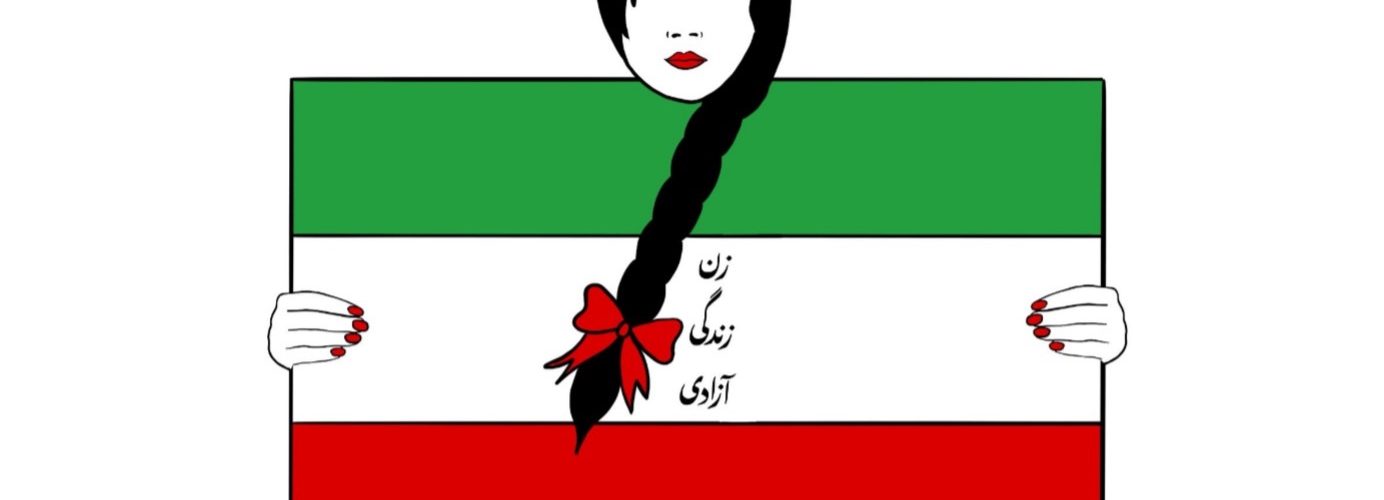Anonymous
Protests against compulsory hijab in Iran have taken an unprecedented form 44 years after the establishment of the regime.
Although Ayatollah Ruhollah Khomeini, the leader of the revolution and the founder of the Islamic regime, said that the Islamic government was “an adaptation of the absolute authority of the Prophet Muhammad” and could “unilaterally cancel the religious contracts it has established with the people” or “temporarily prevent cardinal obligations such as Hajj when it is against the good of the Islamic state,” the issue of compulsory hijab, which is not one of the basic decrees of Islam, has been implemented and become a pervasive crisis for the Islamic Republic.
The compulsory hijab is a symbol of the innate obligations of the Islamic Republic of Iran, but it was only enacted as a state law seven years after the February 1979 revolution.
Contrary to claims from many officials of the Islamic Republic of Iran, such as Ebrahim Raisi, who have referred to the hijab as optional, it is compulsory under various laws in Iran. Under the laws of the Islamic Republic failure to comply with the mandatory hijab can be prosecuted and its scope has been extended to such an extent that. in extreme situations, issuing apostasy sentences (which can be punishable by execution) against the offender is possible based on the existing legal system.
The legal axis of compulsory hijab in the Islamic Republic of Iran is “the regulation of violations and punishments of retail clothing which if used in public could be deemed as offensive against sharia and or public chastity”, which was passed in 1986, seven years after the February 1979 revolution.
According to Article 4 of this Act , “those who publicly wear their clothes and makeup in fashion that is deemed offensive against sharia or public chastity, will be prosecuted in a competent court, and could receive sentences as outlined under Article 2.”
The Act imposes penalties, warnings and guidance, rebukes and reproaches, a sentence of between 10 and 40 lashes, and a fine. The compulsory hejab applies to all men and women of any nationality or religion in the land, sea and air territories of the Islamic Republic of Iran.
Ten years after the adoption of the above mentioned, a complementary law was passed criminalizing the non-observance of women’s hijab and increased the punishment to imprisonment.
“Women who appear in public without an appropriate hijab are sentenced to imprisonment ranging from ten days to two months or to a fine of 50,000 to 500,000 Rials in cash.”
The Act known as Islamic Penal Code does not clearly define or specify the characteristics of what constitutes an “appropriate hijab”. However, according to the constitution of the Islamic Republic, instances of such ambiguity should be referred to Islamic written sources and, if required, at the next stage fatwas.
Although some Shi’ite clerics such as Ayatollah Hossein Ali Montazeri, do not perceive the hijab as a compulsory Islamic requirement, other views which are the basis of action in the Islamic Republic, clerics consider the definition of hijab based on a wide interpretation which emphasizes the necessity of covering the entire body of a woman except their face and the palms of two hands.
In other words, exposure of all or part of the hair or any other body part, except the face and palms of the two hands, can be deemed as examples of the inappropriate hijab. Therefore, women who are not fully covering their whole body but face and palms of hands, can be charged.
Infiltration of compulsory hijab into other regulations of the Islamic Republic
The compulsory hijab, as a legal basis, has entered subsequent laws such as the Administrative Violations Act and the Disciplinary Regulations of Students in the Islamic Republic. According to the Law on the Investigation of Violations of the Office approved in 1993, the failure to enforce the compulsory hijab by government employees of the Islamic Republic of Iran is an administrative violation and fines can be heavy and include the possibility of permanent dismissal from government organizations.
Although such violation is not deemed a criminal offense, due to the criminality of not complying with the compulsory hijab itself, the Administrative Code Investigation Board shall send the case of the offending employee to the judiciary system. Even if the judiciary does not convict the individual for the offense, the ruling of the Administrative Violations Investigation Board will not be overruled.
According to the disciplinary regulations of students of the Islamic Republic of Iran approved in the Council of Cultural Revolution in 1995, which is a legislative body outside parliament and the Constitution Law, fines for not observing the compulsory hijab and appropriate attire enforced by the regulations, can include suspension from studying for up to two and a half years, but the offending case is also sent to the judiciary system in order to be prosecuted.
According to Iranian law, appropriate hijab should be observed in any public environment and failure to do so even if the offender attempts to conceal will not affect the court’s verdict. This is why removing a headscarf in a car, even though it is in privacy, is a criminal act and can be prosecuted. The same goes for not wearing a compulsory hijab at private parties. According to the Iranian law, it is a public environment because of the presence of unrelated persons, whether women or men (known as non-mahrams in the Islamic term) at the party, and women should observe the appropriate hijab guidelines.
The militias of the Basij force and the police are considered the enforcers of the regulation around hijab, based on a legislation passed in 1990, and have the duty to arrest and file a case against the offenders if they observe violation of compulsory hijab even at a private party or receive reports from two witnesses to a party.
The same goes for the prosecution of retailers who trade attire deemed “in violation of the appropriate hijab” under “The Act on how to deal with violations and punish sellers of clothes whose use in public is against Sharia or imposes fines on public modesty” (1986).
According to the Act, the Law Enforcement Force of the Islamic Republic of Iran or Disciplinary Force of the Islamic Republic of Iran, abbreviated as FARAJA (previously NAJA), the General Directorate for Combating Social Corruption is specifically the arm that enforces and fights against offenses involving violations from hijab mandates.
Hijab related crimes have a wide scope and can go all the way to apostasy
Resistance against an arrest by hijab law enforcement agents, including the Morality Police, under Article 607 of the Islamic Penal Code is considered “defiance of the order of a state officer”, and if the offender or accused resists arrest and detention, they have in fact committed numerous crimes and will receive a judgments and be punished accordingly.
Hijab related crimes can be tried in both criminal courts and the Islamic Revolutionary Court. In accordance with Article 5 of the Law on the Establishment of General and Islamic Revolutionary Law courts, all offenses against sovereignty of the state or moral corruption are within the jurisdiction of the Revolutionary Court.
During the interrogation and investigation phase, if the Prosecutor’s Office determines the hijab related crime was deliberated in order to morally corrupt the Islamic state and in violation of Islamic values, the offender will be tried in the Revolutionary Court instead of the criminal court.
If the court determines that the offender has antagonistic motives, such as encouraging others to commit the same offense or propaganda against the Islamic state, they will receive judgments in accordance with each of those offenses. In a wide interpretation of the law, if proven that the accused committed the offense, the judge can sentence the accused with apostasy which is punishable by execution.
Hijab related sentences cannot be appealed
Except for the death penalty, which must be upheld by the Supreme Court, in accordance with Article 232 of the General and Revolutionary Courts Code, there is no possibility of appealing the original court’s ruling to those convicted in hijab related cases, and the sentence issued by the original court is “final and irreversible.”
Hijab related offenses are deemed as ‘visible crime’ in accordance with current laws of the Islamic Republic, and those arrested by the authorities are automatically charged. If the arresting officer does not turn the offender in to be tried at criminal court, they have committed a violation of their duties. Once the accused is convicted in court, their sentence is irreversible which is, in fact, in contradiction with the Constitutional Law.
The Islamic Republic of Iran is the only country in the world where hijab is compulsory in its territory and is imposed on citizens and enforced through the police, Basij militias and the judicial system.
The deep humiliation caused by the imposition of such legislation that is found inadmissible by a large proportion of the country’s citizens, has now led the country to a critical point.
Header Image Credit: Roshi Rouzbehani
TO CITE THIS ARTICLE:
Anonymous 2023. ‘How did the enactment of compulsory hijab laws become a crisis for the Islamic Republic of Iran?’ Discover Society: New Series 3 (1): https://doi.org/10.51428/dsoc.2023.01.0006




